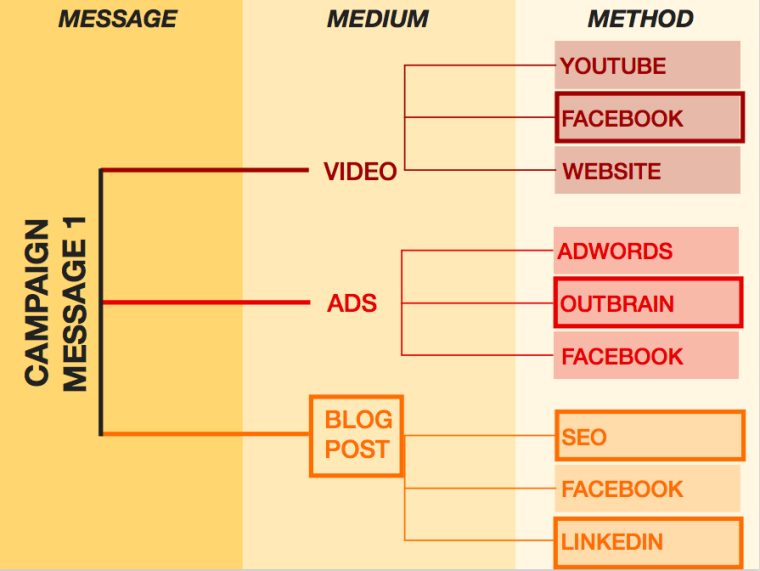Creating content that actually drives revenue and conversions is about more than finding the right blog post or SlideShare. It’s actually the result of a number of variables that need to come together to create a continuous understanding of what your audience want or need and providing relevant content that meets those criteria.
Since that is a huge undertaking and would make for a great book as opposed to an article, I’m going to outline some of the larger factors that will help you get set up, determine what’s working, and a few content creation tips that will ensure you can keep up with demand without having to hire an army.
Getting Set Up for Profitable Content Measurement
While cumbersome and unexciting for most of us, getting things set up properly for good measurement and usability are key factors for maximizing profit later. While everyone’s content creation and analytics systems may vary, there are a few things I’d recommend that are likely to help you get more out of every effort.
-
Create keyword groups.
You can create groups of targeted keywords that map back to things such as products, features, geographies, audience types, marketing campaigns, etc. Doing this will help ensure you are creating content with those words in mind and are tracking how your brand’s site and content are performing for them versus competitors as you continue to create and optimize.
-
Work hand-in-hand with your SEO, content, and social teams to figure out what a comprehensive list of keywords looks like for your organization.
Working across various groups to understand what they’re working on and goals they have will allow you to create content that takes all facets of the organization and planned efforts into account before expending your resources. Keyword list creation comes from both keywords that are already driving traffic and those topics that you are wanting to rank for—so getting a comprehensive list is typically the work of the entire marketing department.
-
Create content groups that mirror the keyword groups.
So, for every keyword group you create, there is likely corresponding content that can be grouped together to match it. Whether this is around marketing campaigns, features, audience segments, etc., grouping your content will help you compare performance from group to group, as well as segment out updates, recommendations, and tasks.
-
Get a competitor monitoring and comparison system set up.
Ideally, you’re not spending all day watching what competitors are doing. Instead, there should be something in place that will monitor their activities, compare their content and keywords with yours, and allow you to reap the benefits of that knowledge. If you’re not already doing that, it should be a priority for the coming year, as that information will inform content creation and expand on topics that will resonate with your audiences. A tip for folks already tracking competitors: Do some competitor discovery at least once per quarter so that you are on top of anyone that’s taking traffic from you and know how they’re doing it.
-
Make sure these groups are added to all of your marketing organization’s analytics tools.
From Google Analytics to GinzaMetrics (my company) – you have to make sure you’ve got your groups set up in all areas of measurement so that you’re consistently comparing apples to apples. Another benefit of having them added to every analytics and measurement account is that teams can work together more effectively for strategy and reporting purposes for content and search initiatives.
Determining What’s Working in Your Content Process
Creating new content is a stumbling block at some point for most marketers. Part of what adds to the frustration is an unclear picture of what’s working and what’s not. While much of this can be addressed by using the keyword and content group strategies mentioned above, I’ll outline some ideas that can help you quickly access your efforts.
-
Break out your content at the medium, method, and message levels.
The medium, method, message process breaks out your content by three key factors that often get convoluted in the marketing mix. You can create keyword and content groups for each of these items to make them simple to track and analyze. The medium is the type of content that you’ve created – whether it’s a video, image, blog post, presentation, etc. The method is the specific channel you’re distributing the content on, for example: Facebook, SlideShare, YouTube, your website, blog, or Pinterest. The message is the particular idea you are trying to convey with your content. Messages can be a variety of things such as new product promotions, feature announcements, holiday sales, or targeted resources to a user type. (Helpful hint: Your message type is often a great keyword and content group because it typically mirrors marketing campaigns, products, special offers, etc.)
-
Use the medium, method, and message to understand conversions.
Once you’ve got your content grouped by medium, method, and message, you can see what specific content is working for your audience and make adjustments, replications, and corrections from there. For example, if you have a video that’s performing really well on YouTube – do you know if success is because your audience really likes video content, because the message is resonating well, or because your audience happens to be on YouTube as a channel frequently? If you use the medium, method, message measurement system you can figure these things out and either share your video in more places, create more content specifically for YouTube, or take that message and expand it out to other areas and build on it.
-
Add in your older content into the medium, method, message measurement to gain perspective.
By adding in your older content and understanding what has historically performed well and how channel use, messaging, and content type have evolved for your market, you may find some places you haven’t leveraged well enough or have allowed to lapse in favor of newer channels that aren’t performing as well. Reviving content efforts in some places that may have fallen by the wayside can often reinvigorate an audience that has been left behind.
Content Creation Tips that Convert Audiences
If you’ve set up things as mentioned in the previous two sections, then these content creation tips are going to be a snap. What we’re really doing at this point is taking all of the setup and measurement that was previously mentioned and using it to figure out what to spend our time creating that will get the desired response from our audience.
-
Look to your older content for clues.
You’ve probably got some evergreen content pieces that continue to drive traffic to your site. If you’ve just started checking out the medium, method, message idea – you may find some clues as to why they’re still so popular. If it happens to be a particular topic that you did a blog post around, maybe consider making a video, SlideShare, webinar, landing page, or other content that addresses it as well.
-
Use competitor content as a guide.
If your competitor is constantly taking traffic from you in one particular area (use keyword and content groups to see where you’re winning and losing) then take a look at what they’re creating and compare it to your own – maybe you have existing content that just needs a refresh.
-
Check social media trends for opportunities.
Take a look at what’s trending or consistently discussed in social media areas like Facebook, LinkedIn Groups, Quora, etc. and then see if you’ve got content that provides answers. If you don’t, consider this an opportunity to create new content that matches current issues your target audience is talking about.
-
Expand on the mediums, methods, and messages that are resonating.
If you’ve struck content gold with a particular area, make sure you’re utilizing it. If you have a big following on a particular channel or specific content type – go back through the rest of your content and see if it can be implemented there as well. Or if you’ve got a message that is performing – make sure you leverage it everywhere such as email, blogs, social media, landing pages, videos, slides, etc.
Getting set up correctly, figuring out what works, and employing some new creation techniques should put you on the road to more profitable content and build a solid foundation for your brand. Spend a little time up front and reap the rewards for years.
Image Credits
Featured Image: Image by Erin Robbins O’Brien
In-post Photo: Image by Erin Robbins O’Brien





